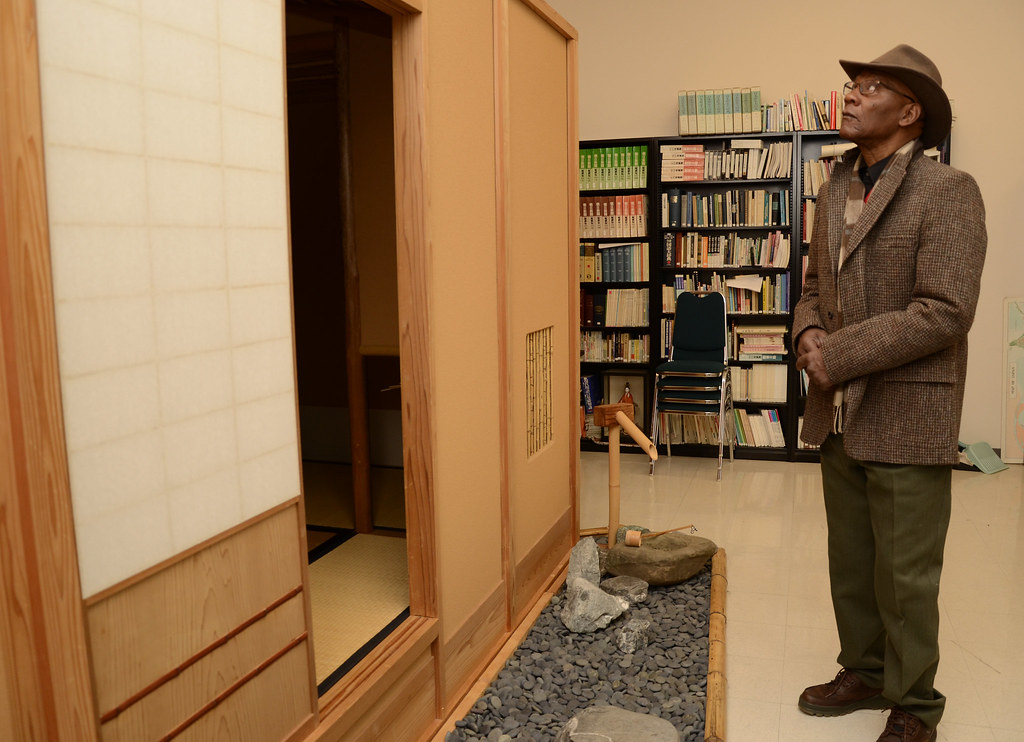
[soundcloud url=”http://api.soundcloud.com/tracks/78995387″ params=”” width=” 100%” height=”166″ iframe=”true” /]
San Francisco State is surrounded by a city filled with culture and tradition, but recently retired facilities manager John Holman knows about a small treasured piece of culture and history tucked away inside the Humanities Building.
A japanese tea house sits in Humanities 117. Donated to the school by Adachi Industry in 1992, Toshiko Mishima, then-Japanese Program Coordinator, took advantage of the tea house and put John Holman in charge of collecting the pieces and keeping them safe.
“The Humanities Building was still being built at this time. I located a room in Burk Hall, room 24. The tea house arrived here in pieces, she needed someone to look after the pieces of the tea house, I had to report back to her of the upkeep and situation of the tea house,” Holman said.
Once all the pieces of the tea house were received it was constructed for one day of celebration then torn down to be stored. After being stored in Burk Hall, the tea house was then moved to the basement of the old library.
“The campus was always pressured for space,” Holman said, “ but after the Humanities was built I no longer had responsibility.”
Shortly after the house was erected in its current location, Mishima passed away.
“I feel a special connection with the professor who was in charge of curating the house, she was a terrific person, everybody loved her,” Holman said.
Holman greatly respected Mishima and took good care of the tea house. He worked at SF State for 34 years and always felt a close connection to the tea house.
“My best experience was the safe keeping, this (is) a very important piece because it brings a real culture,” Holman said.
Sitting unused for almost a decade, Professor Midori McKeon decided to make use of the tea room and began studying the tea ceremony in Japan. The Japanese program now uses the tea house to instruct undergraduates on Japanese architecture and culture.
“The very existence of the tearoom prompted me to learn the tea ceremony, to get certified. It took eight years of weekly practice for me to get certified as a tea teacher in the 400-year-old Omotesenke tradition of tea,” McKeon said.
The tea house is not only used for instruction but also has annual tea ceremonies for the campus community.
According to Holman these tea ceremonies are long rituals, lasting anywhere from 40 minutes to four hours, he had been invited to many but only found himself attending once.
“I don’t have that kind of patience to wait, it’s a long process, they light candles and they take tea and they pour it and pour it, it’s a ritual thing. It’s not something where you think you go in rock and rolling and drinking tea like its a coffee shop,” Holman said. “I mean you don’t want to get up and leave but I did.”
Holman is now one of the only people who took part in the history of the tea house since its inception at SF State. Before he went into retirement he contacted Associate Dean Susan Shimanoff to share his story.
“He said to me ‘I am the person who helped take care of it and helped assemble it,’ John didn’t want to leave the university without leaving his part of the story,” said Shimanoff, “I was touched by his wanting to us to have this history, he has such a wonderful demeanor.”



